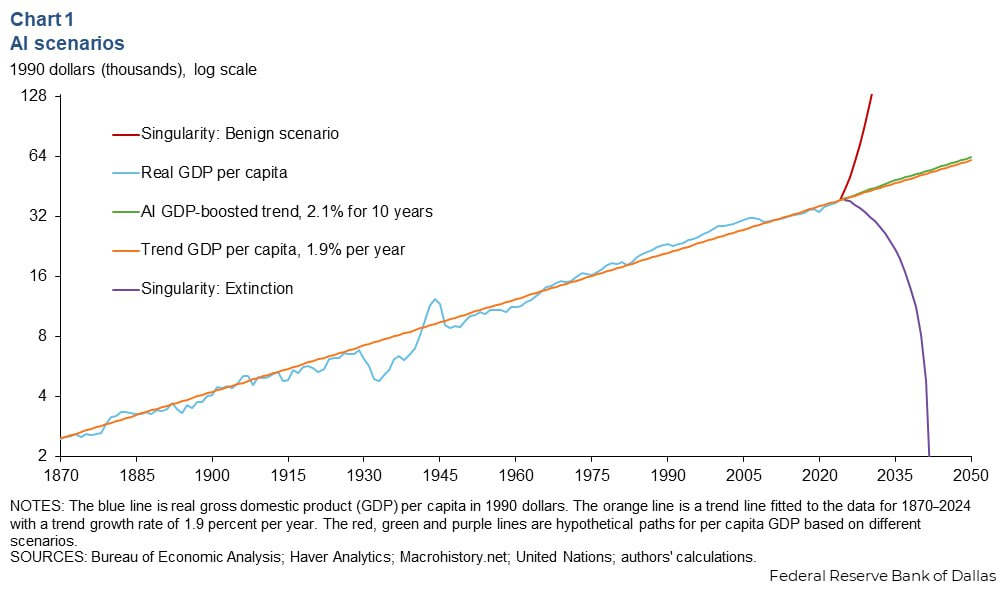🤖 What Could Happen to Living Standards in the Next Few Years
Bankers are not prone to fantasies. But when even the Federal Reserve Bank of Dallas starts talking about “singularity,” it’s time to put down your coffee and take a closer look at the charts.
The chart shows real GDP per capita from 1870 to 2024 and several scenarios illustrating what might happen in the coming decades. Two of them are almost science fiction, yet these scenarios increasingly appear in forecasts by economists and technology leaders.

- Red line — the “soft singularity” scenario according to Sam Altman (OpenAI). In this scenario, artificial intelligence does not destroy humanity but makes us richer, smarter, and more efficient. Productivity rises, the economy soars, and GDP per capita shoots into the stratosphere.
- Purple line — the “hard singularity.” Machines gain self-awareness, decide that humans are not necessary for further development, and start a new era… without us.
- Orange and green lines — realistic growth scenarios of 1.9–2.1% per year. Reliable, predictable, boring. This is how the economy has developed over the past hundred years — and how it might continue if we do not step on the digital accelerator.
The key point to understand: this is not a joke by Twitter futurists. The research was prepared by the vice president and deputy director of research at the Federal Reserve Bank of Dallas together with a research department analyst. These are people who usually write about interest rates and macroeconomic risks, not about a machine uprising.
And yet — they say that singularity is no longer a topic for science fiction but a real economic scenario. If AI truly accelerates productivity growth, the world could witness an exponential increase in wealth. If something goes wrong, the chart shows how low we could fall.
📈 In other words: AI will either make us rich or unemployed. There is simply no third option on this chart.
All content provided on this website (https://wildinwest.com/) -including attachments, links, or referenced materials — is for informative and entertainment purposes only and should not be considered as financial advice. Third-party materials remain the property of their respective owners.


